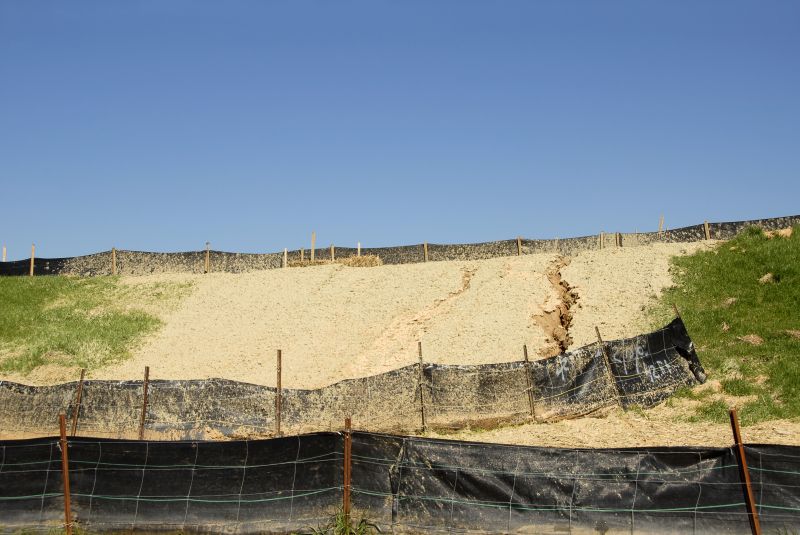Top-Rated Products for Effective Silt Fence Installations
Identify high-performance tools and materials that deliver dependable results for all your silt fencing needs.
 Silt fence installation is a critical component in erosion control and sediment management for construction sites, landscaping projects, and land development. Properly selected products ensure effective sediment filtration, minimize runoff, and help comply with regulations. The core of a successful installation often revolves around durable fencing materials that can withstand environmental conditions and maintain their integrity over time. In addition to the fencing fabric itself, various accessories and support systems are essential to ensure the fence remains securely anchored and functions as intended.
Silt fence installation is a critical component in erosion control and sediment management for construction sites, landscaping projects, and land development. Properly selected products ensure effective sediment filtration, minimize runoff, and help comply with regulations. The core of a successful installation often revolves around durable fencing materials that can withstand environmental conditions and maintain their integrity over time. In addition to the fencing fabric itself, various accessories and support systems are essential to ensure the fence remains securely anchored and functions as intended.
Top Overall Option
Heavy-Duty Sediment Control Fence Fabric
This versatile fencing fabric offers a balance of durability and permeability, suitable for various site conditions. Its robust construction helps withstand environmental stresses, while its filtration properties aid in sediment retention. Easy to install with compatible stakes and fasteners, it is a reliable choice for long-term erosion control efforts.
Types of Products For Silt Fence Installations
Woven Geotextile Fabric
A durable fabric designed for sediment filtration and soil stabilization, suitable for most standard projects.
Non-Woven Filter Fabric
Offers high permeability and filtration efficiency, ideal for areas with high water flow.
Heavy-Duty Polypropylene Mesh
Lightweight yet strong mesh for temporary erosion control in less demanding environments.
Steel Stakes and Posts
Provides secure support for fencing fabric, available in various sizes for different soil conditions.
Plastic or Wooden Stakes
Cost-effective options for supporting silt fences, suitable for short-term projects.
Silt Fence Clips and Fasteners
Helps attach fencing fabric securely to stakes, ensuring stability during installation.
Erosion Control Socks
Tubular barriers filled with sediment, used to reinforce fencing or as standalone erosion barriers.
Temporary Silt Barrier Tape
Markers and visual cues for fence boundaries or hazard zones during installation.
Drainage Matting
Supports water flow and prevents clogging behind fencing structures.
Sediment Barriers with Anchors
Anchored barriers designed for quick deployment in high-flow areas.
Geogrid Reinforcements
Provides additional stability for fencing in challenging soil conditions.
Biodegradable Stakes
Eco-friendly support options that decompose over time, reducing environmental impact.
Popular Choices
Widely used for sediment control due to its strength and filtration capabilities.
Commonly chosen for their affordability and ease of installation.
Preferred for temporary projects requiring quick setup and removal.
Trending for their effectiveness in high-flow areas and ease of use.
Popular for their durability and reliable support in various soil types.
Chosen for its high permeability and sediment retention properties.
Often used for marking and safety during installation.
Selected for enhancing water flow and preventing clogging.
Growing in popularity for environmentally conscious projects.
Commonly used to attach fencing fabric securely to supports.
Trending for challenging terrains requiring extra stability.
Popular for their quick deployment and effectiveness in high-flow zones.
A variety of product options are available to suit different project sizes, soil types, and installation environments. From heavy-duty woven fabrics to lightweight mesh options, the choice depends on factors such as expected water flow, soil stability, and project duration. Accessories like stakes, anchors, and silt fence clips play a vital role in maintaining the fence's position and effectiveness. Proper installation techniques and quality materials contribute significantly to the overall performance of silt fences, making the selection process an important step in project planning.
When selecting products for silt fence installation, it is important to consider the durability and permeability of the fencing fabric, the ease of installation, and the compatibility of accessories. Ensuring that components are designed to work together can save time and reduce the need for replacements or repairs. Additionally, understanding the specific requirements of your site, such as slope, soil type, and expected water volume, can help in choosing the most appropriate products. Investing in reliable, high-quality materials can facilitate smoother installation and more effective sediment control throughout the project's duration.
Key Buying Considerations
- Durability of the fencing fabric to withstand environmental conditions.
- Permeability of the fabric for effective sediment filtration.
- Compatibility of stakes and fasteners with the fencing material.
- Ease of installation and removal for temporary projects.
- Soil type and slope conditions at the installation site.
- Expected water flow and volume to determine fabric strength.
- Project duration and whether the fencing is intended for short-term or long-term use.
- Environmental factors that may influence material choice, such as UV exposure.
- Cost considerations balanced with quality and performance.
- Availability of accessories like anchors, clips, and support stakes.
- Regulatory requirements or standards that need to be met.
- Potential need for reinforcement or additional support in challenging terrains.
- Eco-friendly options if environmental impact is a concern.
- Storage and transportation requirements for the selected products.
- Compatibility with existing site infrastructure or other erosion control measures.
